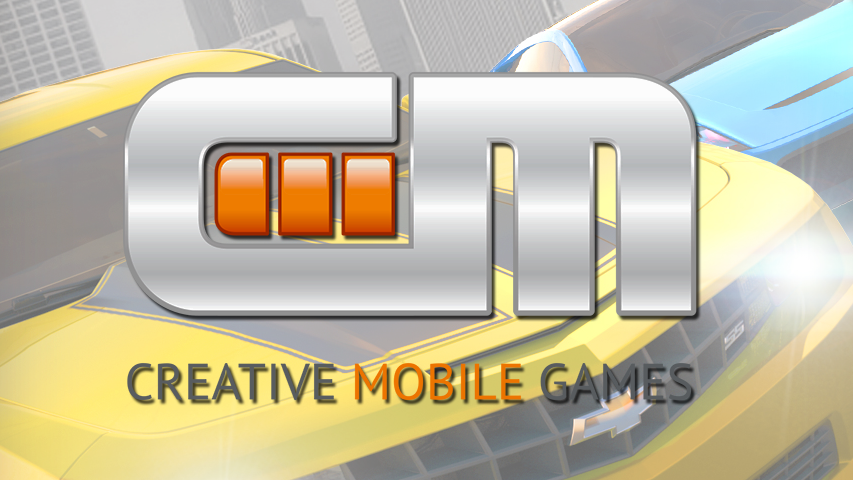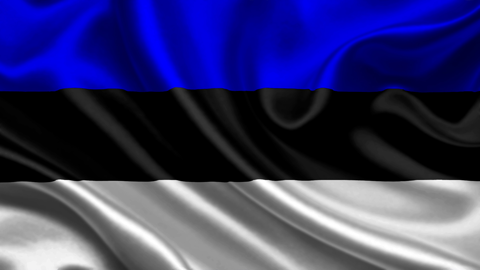Creative Mobile: Our profits from Drag Racing were able to mitigate any negativity
About working in Estonia, the history of Drag Racing development and attitude towards clones App2Top.ru Vladimir Funtikov, head of the Business development department and one of the founders of Creative Mobile, told us.
Vladimir Funtikov
Hi! First of all, tell us a little about the studio, why did you decide to engage in mobile games, what did you do before that, how did the studio arise?
Hi! Before Creative Mobile, some of its employees were porting mobile games for a foreign company. In 2009, as part of cost reduction, her Tallinn office was closed, and my colleagues and I decided to try our luck in independent development.
Before that, we managed to work a little with the first Android device. That's when we believed in the potential of this platform.
However, having released our first project in December 2010, we found ourselves in a market with a low level of competition, but also a low level of profitability, so the first year was difficult. But gradually we found the right business model, Android phones became more popular, and games began to generate revenue. By improving the products and strengthening the team, we have reached our current state: approximately 200 million downloads of games and a team of 80 people.
Do you have any work experience in Russia? Based on it, is it possible to talk about any special specifics of working in IT in Estonia (what is this specificity, where is it better to work and why, does the Estonian government support IT companies, as the governments of the Netherlands and Finland do)?
Estonia and Russia are difficult to compare because they are completely different worlds. Only 1.3 million people live in Estonia, 400 thousand of them in the capital. Because of this, there is relatively little bureaucracy, many operations are performed remotely, and digital document management is widespread. There is a so-called entrepreneurship support fund, which distributes money that is not bad by the standards of small businesses. Estonia positions itself as an "electronic state" and a paradise for startups, and the attitude towards IT companies is more than loyal.
In connection with the recent events in Ukraine and the far from ideal business conditions in Russia, would you advise the game developers of Ukraine and Russia to move to Estonia? What difficulties can they face?
I would advise, at a minimum, to consider this option with due attention. The simplicity and transparency of doing business is attractive, first of all. Freedom of movement within the EU and belonging to the eurozone may be useful. It's very easy to start a company and start working, no one puts a stick in the wheels. Skype and its startups are very proud of here, even those that are located abroad are considered such — a local founder or investor is enough. If a foreign developer settles in Estonia, then he will also become "his own".
The obvious disadvantage is the scale, which is especially strongly reflected in the labor market. We often have to invite specialists from Eastern Europe to strengthen our team, since our own "game development school" has not yet been formed in Estonia. For a company increasing its production capacity, this will be a problem.
It is comfortable to live and work in Estonia at the household level. Some of the specialists we invited have already managed to get their own housing and even replenish their family. The pace of life is relatively calm, many people like clean air and an abundance of greenery in cities and places to relax outside the city. For a person from Moscow or St. Petersburg, our country seems to be a clean, well-groomed province in which news about a goat that fell from a barn can get on a news portal. There are obvious disadvantages and equally obvious advantages to this.
In a conversation with Russian colleagues, no, no, yes, a cautious question on the topic of discrimination against the Russian-speaking population will slip through. I can only say that neither I nor my partners or friends have ever encountered such a problem.
Flag of Estonia
I know that the Estonian mobile game market is quite small. However, for example, Mail.Ru Before launching its latest game Evolution: Battle for Utopia in Russia, the Group made a preliminary launch of the game in Estonia. Can this indicate the rapid growth of the market and the fact that the behavior of Estonian users is close to the behavior of Russian users?
Tablets and smartphones have really become very popular lately, but the local market still seems too small for us to conduct any research.
Talking about the market, we have moved far away from the company itself. One of your central titles is Drag Racing. It was successfully skewed by NaturalMotion, releasing CSR Racing, which was then skewed and upgraded by Kabam once again, releasing Fast & Furious 7. What was your reaction at the time of the release of the projects? How hard have they hit Drag Racing's downloads and revenue?
First of all, it is worth paying tribute to Boss Alien, because they very successfully combined our mechanics with high-quality graphics and monetization suitable for the market and the moment. But at first, seeing rivers of praise for CSR Racing was, of course, painful. It was also not very pleasant how accurately some parts of the game were repeated, given that we seem to be colleagues in the workshop. Fortunately, our profits from Drag Racing were able to mitigate any negativity. And when Kabam released Fast & Furious 6, we even felt a certain satisfaction imagining the reaction of the guys from Oxford.
There were also funny moments. Anyone who knows games of this genre is familiar with the principle of ranking cars according to three parameters: power, weight and traction. At one time, we invented this system "in a hurry", but most subsequent games adopted it as a dogma, including the fictional "clutch coefficient", which successfully transferred to CSR Racing, F&F 6, and so on.
Competitors did not cause direct damage to our sales, even by going to Google Play. A huge user base and compatibility with most devices played in our favor. But the publicity caused some harm. As soon as NaturalMotion reported fabulous profits, thousands of developers rushed to do something similar. Combined with the practical impossibility of copy protection, this led to the subsequent clogging of the market with similar games.
CSR Racing
In the spring, Nitro Nation appeared on Google Play, as far as I understand, a three-dimensional sequel to Drag Racing. Tell us a little about the project, how does it radically differ from the projects released by NaturalMotion and Kabam?
Nitro Nation is being created rather to complement the Drag Racing series with a more serious, in-depth game. We studied our audience a lot and identified a significant segment of players who need more immersion in the process, a more serious challenge. Games from NaturalMotion and Kabam may look high-quality and realistic, but there is little room for a real enthusiast. "Pumping" goes along a given path, the possibilities of online play are very limited. We want to create a kind of sandbox for car lovers, where you can have fun in different ways.
For example, we have created an exterior editor unique to mobile racing, and we see how some players create real masterpieces. For others, it is more important to win unique parts, complement them with secret tuning and achieve success online. We have a huge amount of developments that will gradually open up new opportunities in the game, based on the database created so far.
Conceptually, you were one of the first in this genre. Why was the release of the three-dimensional version of the game so delayed? Is it almost three years between the release of Drag Racing and Nitro Nation?
There are two equally significant reasons. The first of them is the market. We have achieved the greatest success on the Android platform, which does not give special advantages to high-tech games. It seemed pointless to do "3D for the sake of 3D" and go to 50% of devices, so we waited a long time for the moment when the gap between high-end and low-end would be reduced to acceptable. The second reason was the team. At the time of the release of Drag Racing, there were five of us, including only 2 programmers and 1 artist. It was impossible to take on an AAA project with such a composition, while simultaneously supporting a game with a million DAU.
Do not forget that over these three years we have released a dozen games, including two projects in the DR series — Bike Edition and 4×4 — each of which was commercially successful and collected about 20 million downloads.
Nitro Nation
And the last question is about the plans. What can we expect from the company after the release of Nitro Nation?
We are developing Nitro Nation as a service, and the formal release is just a small step on our way. There are a lot of ideas to improve the game, many of which come from the community, a huge amount of data from analysts, and the potential of the project is still far away. At the same time, we continue to support the Drag Racing series — this year a global update codenamed "Drag Racing 2.0" will be released, with a high probability a completely new racing game will also be released before the end of the year.
In parallel with the internal development, we launched our own publishing brand under the banner of Fun Factory, within which 5 games have already been released. We get quite a lot of interesting projects, and it is quite obvious that the team will not be bored.




